There are a few things in life that you don’t want to find yourself in need of which make the extra hassle or bulk of carrying them around worth it. In this category, I’d put a gun for self-defense, extra cash, and a first aid kit among some other things. One great option for first aid supplies would be Blue Force Gear’s Micro Trauma Kit NOW (Micro TKN) filled with whatever supplies you can imagine yourself needing in a medical emergency.
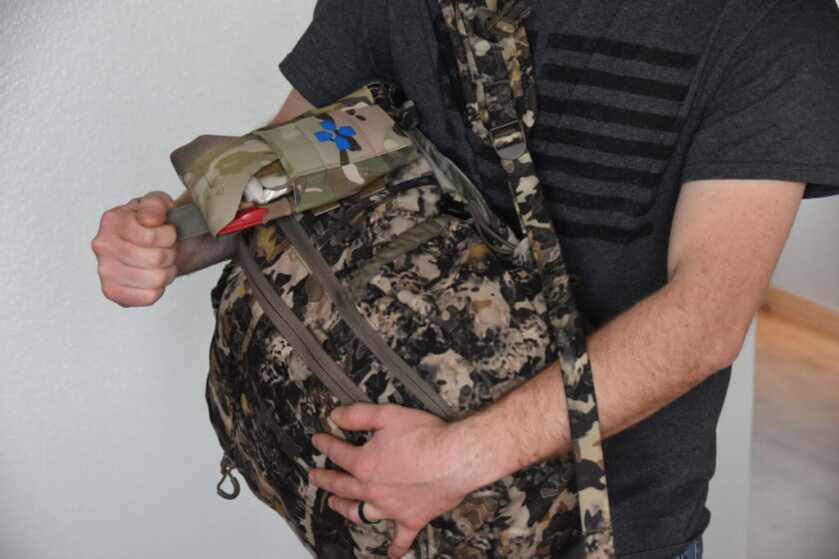
What Is The Micro Trauma Kit NOW?
Blue Force Gear sells a number of items, from slings to plate carriers and medical supplies. The Micro Trauma Kit NOW features an elastic-sided sleeve with a trifold insert that you can easily gain access to by yanking on the pull tabs located on either side. Both tabs have a “Ball Loaded Index Point” or BLIP in short, which allows the user to get a grip and easily yank the insert out for quick access to the medical supplies inside. This small pack comes in a number of different options, including a belt carry, and Molle compatible option. I chose to attach my Micro TKN to my EDC bag, so the Molle attachment was my choice.
The Micro TKN can be purchased alone, or with medical supplies included. There are advantages to both routes: in the first, you can customize the Micro TKN with whatever gear you want to best fit your prospective needs. In the latter, you get a kit with high-quality gear provided in a useful combination.
Medical Supply Options
I chose to fill my Micro Trauma Kit with Blue Force Gear’s “Advanced Medical Supplies” because I felt that this kit best fit my needs/capabilities as an EMT and health care professional. This kit ($139.95) comes with the following:
- QuickClot Combat Gauze
- HyFin Vent Chest Seal (2 seals included)
- Cleer Medical Trauma Bandage 4” Flat Pack
- Decompression needle
- Six 2” x9” Frog Tape
- Size 28 Nasopharyngeal Airway
- Heavy Duty Medical Gloves in tan (1 pair)
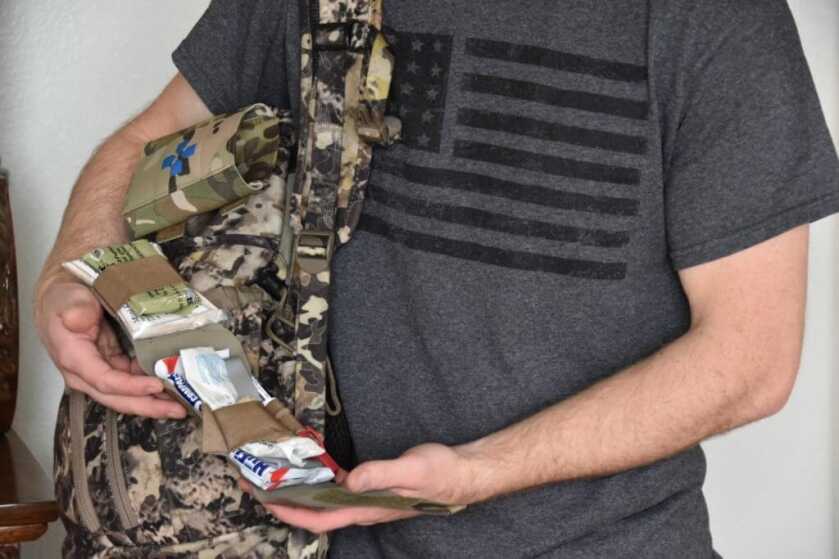
There is also an option for a basic medical supply kit ($69.95) which consists of the following:
- Hemostatic dressing for wound packing/clotting (1 included)
- 4″ Emergency Trauma Dressing (1 included)
- 9″ Medical Grade Easy Tape (6 included)
- Tourni-Kwik Compression Tourniquet (1 included)
- Heavy Duty Medical Gloves (1 pair of large sized gloves)
What’s A Small Medical Kit Good For?
There is an infinite number of situations where you may find yourself digging through a first aid kit, from looking for a Band-Aid to keep that paper cut from bleeding on your work files, digging out a tampon for your or your miss’s surprise in the field, or to grab a nasopharyngeal airway (NPA) in order to secure the airway of an unconscious bystander to a drunken bar fight. My main point is to suggest that you do not know what can happen to warrant the need for first aid. However, I think we can agree that some situations are more dire than others. That Band-Aid? It can wait. The Tampon? probably need that. The NPA? The poor dude who caught the wild sucker punch could potentially die if you did not have it to secure his airway while he lay there drooling on the ground.
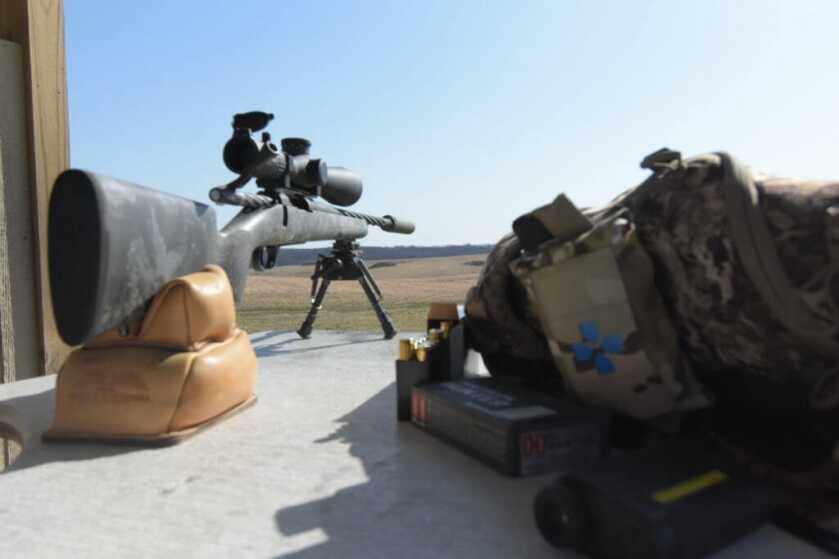
Because the Micro TKN is small, you have to decide what medical supplies you may need. In the future, I may end up re-arranging what is inside of mine at the moment, but the advanced kit (paired with the additional tourniquet) is a great fit for me. Because I am often out in the field hunting and shooting guns, the most dire medical emergency that I worry about in these scenarios would be a gunshot wound or a laceration from a knife/broadhead.
That said, if you ever find yourself in a situation demanding that you use first aid skills, a gizmo 5000 med kit is not going to make up for a lack of an understanding in basic first aid. I recommend that everyone carry a first aid kit filled with supplies that they understand how to use.
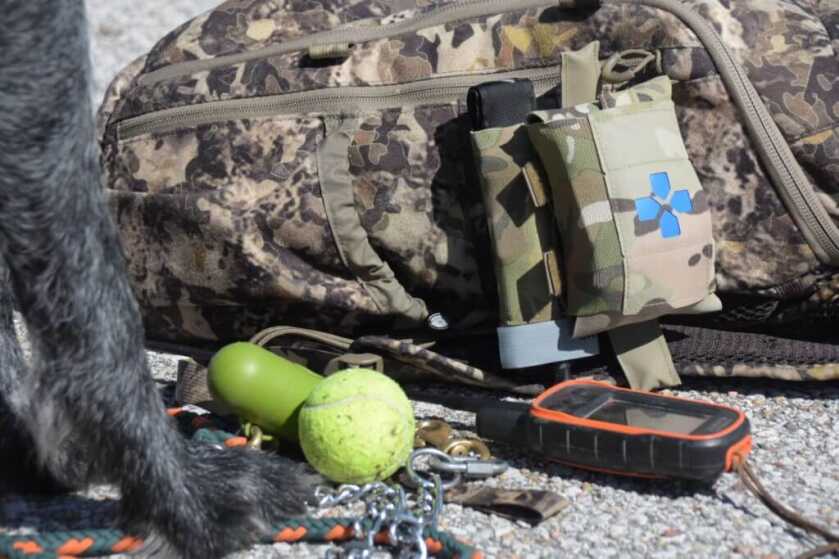
Basic Rundown of Usage
I want to quickly go over all of the medical supplies in the advanced kit to describe how they may be used. This is not a comprehensive training on first aid, only a brief discussion.
QuickClot Combat Gauze
This gauze is not only useful for soaking up blood and applying pressure to a wound, but it also stops bleeding by promoting the intrinsic pathway of clotting. QuickClot is laced with Kaolin, a substance that activates Factor XII in the blood plasma, leading to a rapid and strong blood clotting response. This is a strong hemostatic tool that will help prevent the exsanguination of trauma victims when applied directly to a bleeding wound.
HyFin Vent Chest Seal (2 seals included)
These chest seals are bandages that allow airflow out, but not in when applied to the chest (simply put). These seals are used in penetrating trauma to the chest and prevent tension pneumothorax from transpiring. A tension pneumothorax is the medical lingo for when the lungs are damaged and air leaks out into the space between the lungs and the chest wall, inhibiting the lung’s ability to re-inflate by an increase in pressure inside of the chest. These chest seals can be combined for use on a penetrating injury on the entry/exit site.
Decompression needle
This is also a tool for treating a tension pneumothorax. If a lung was perforated, but air is not able to flow out of the chest cavity, the chest seal will not be able to work as intended. In this scenario, a decompression needle can be inserted between the second intercostal space at the mid-clavicular line. The needle is withdrawn and the needle catheter is left in place to allow the air to flow out of the chest cavity. This is only done in life-threatening situations, so any potential damage that can be caused by the needle is (or should be) a welcome alternative to dying.
Cleer Medical Trauma Bandage 4” Flat Pack
This is a bandage that has a 4″ wound pad attached to an elastic band that can be used to secure the bandage to a limb, or wherever it needs to be held. There are less fancy uses for this bandage, but it is an important addition to a med kit nonetheless. This bandage could be used for keeping pressure on a wound and collecting blood flow as well as keeping the wound clean and isolated.
6 2″x9″ frog tape
This is simply tape that can be used for almost any purpose. You can secure bandages, use it to construct a brace, simply use it as tape to hang lost dog signs in the woods… get creative.
Size 28 Nasopharyngeal Airway
Nasopharyngeal airways are used in any instance where the patient/trauma victim cannot breathe due to an obstruction. An added plus to a nasopharyngeal airway is the fact that they can be inserted on semi-conscious patients, as oropharyngeal airways cannot typically. The downside is that they cannot be used when the nose is damaged. There are sizing requirements, but a 28 is about the right size for the average adult. When it is needed, simply insert the NPA into the nostril (typically the right) with the bevel toward the septum, angling it toward the back of the opposite eye.
Heavy Duty Medical Gloves in tan (1 pair)
Like the tape, these have implied and well-known applications. Please use gloves any time you are working with blood, spit, vomit, etc… They will protect you, and possibly, the patient. Gloves also have other uses. For instance: cut the tip of a finger off of one and slide it over the muzzle of your black powder rifle while hunting in wet conditions. This is to keep the powder dry and assure the gun goes off when needed. Again, you can get creative.
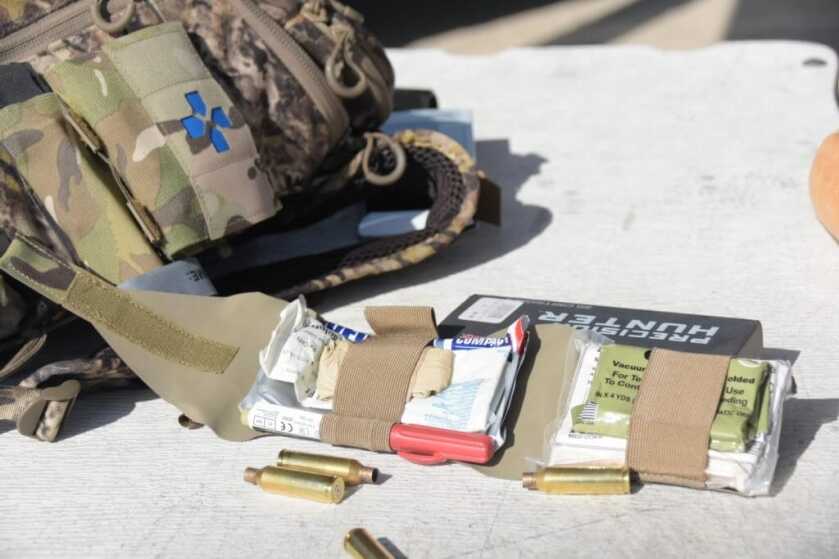
In Summary
I have carried around Blue Force Gear’s Micro Trauma Kit NOW for almost a year now and I have yet to use it. (hooray!) It is small and lightweight, so it has not been a nuisance. I’ve attached it to my EDC bag, along with their Hammock, holding a CAT-7 tourniquet. I’ll be moving it around to and from my hunting packs as I use them, which offers me peace of mind while in the field along with an added safety level.
The Micro TKN stays secure inside of its elastic sided sleeve, thanks to a strip of Velcro on the back, but comes out easily thanks to the BLIP tab system. Because of my mixed hunting/EDC needs, I chose to get my Micro TKN in Multicam, but it also comes in black, coyote brown, camo green, and wolf grey.
Comment on the first aid kit items that you actually use and find indispensable below.


I’m not an EMT, nor do I play one on TV. My wife is a physician, and under her tutelage I purchased a Trauma kit From Amazon and with a few additions, it is everything a trauma surgeon would need in the field, and one with trauma training would be very comfortable with.
Everything comes as a compromise. One must evaluate potentialities and then make a decision on your requirements. I fish alone, I hunt alone,, have been injured alone, and my field trauma kit in conjunction with my field trauma training serve me quite well. Are those activities necessarily appropriate while being alone, no. Am I comfortable with these activities by myself I am not babysitting some other Hunter or fisherman, yes. Each of us must make those decisions for ourselves.
That is not to say everyone can perform the necessary medical requirements in the field. I was fortunate to have the training and the equipment to administer to my particular injuries.
Regardless of what some hype as the beat all to end all medical equipment, I will go back to my previous statement that one must evaluate potentialities and then purchase the appropriate first aid equipment.
Purchase your first aid equipment wisely, your life, or someone else’s life, may depend upon your decisions. I’m not here to tell you what to purchase or where to purchase, simply where I found the best equipment for the best price, and with a few additions it has served me well.
Please enjoy your Outdoor activities to the maximum extent possible. Be prepared for as many things as can go wrong, because they will. Doesn’t mean you have to have a mobile ER, just enough stuff to get you back, and into a medical facility, without being wolf or cougar bait.
There are very simple additions to a survival kit/first aid kit that will serve you well. Road flares to start a fire and keep you warm, survival blankets to do the same, water filtration tablets, satcom availability if desired. Add a minimum have a GPS search that you can transmit coordinates for search and rescue assets.
This is all common sense to experienced hunters and fishermen. Please don’t learn to make the mistakes others have made and make them yourselves. Learn from their mistakes and plan accordingly.
Im an actual paramedic and have been working for three years (started out as EMT 4 years before that). When you actually do the job you realize that you hardly use some of the equipment that often, and stuff that you wouldn’t have thought of is probably a lot more useful.
Sone advice: needle decompression is an advanced skill, and I don’t know how people justify carrying these around without proper diagnostic tools such as a stethoscope to listen for lack of lung sounds on one side. Screwing this up can make thr patient’ s day much worse. I am not aware of any states that allow EMTs to perform this procedure. Also, why no space blanket? Blood loss is heat loss, and one of the most important things u can do in the field is keep a patient warm. Not sexy but it’s the truth.